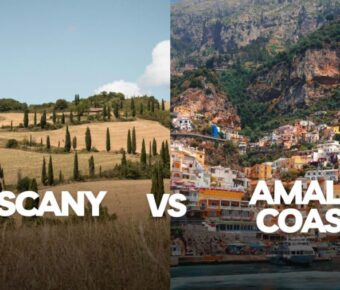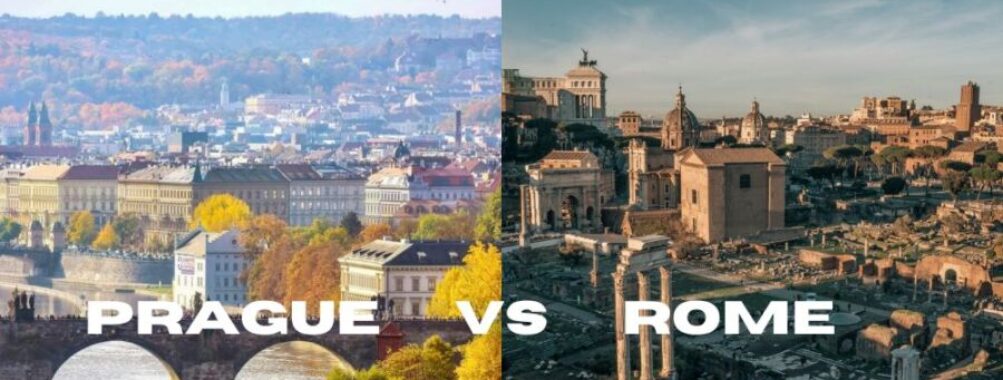
Prague vs Rome: Which Historic European Capital Offers the Ultimate City Break?
Thinking about Prague vs Rome for your next trip? These two European gems offer vastly different experiences. Prague charms with its fairy-tale architecture and cozy beer gardens, while Rome dazzles with ancient ruins and world-class art.
Prague’s compact size makes it ideal for backpackers wanting to explore on foot. Its affordable prices are great for budget-conscious travelers. Rome, on the other hand, is perfect for honeymooners seeking romantic piazzas and candlelit dinners.
The best time to visit Prague is spring or fall to avoid summer crowds. Rome shines year-round, but spring brings mild temps and blooming flowers. No matter which city you pick, you’re in for an unforgettable European holiday filled with culture, history, and mouthwatering cuisine.
Table of Contents
- Historical Significance and Landmarks
- Monuments of Rome
- Prague’s Architectural Heritage
- The Vatican and Prague Castle
- Culinary Delights and Dining Experiences
- Traditional Cuisine
- Dining in Prague
- Italian Gastronomy
- Comparing the Climate and Best Times to Visit
- Weather Patterns in Prague and Rome
- Ideal Travel Seasons
- Accommodation and Staying Options
- Hotels and Hostels
- Unique Stays in Prague
- Luxury and Budget Options in Rome
- Exploring Arts and Museums
- Museum Culture in Prague
- Famous Galleries of Rome
- Public Transportation and Getting Around
- Navigating through Prague
- Rome’s Transit Options
- Shopping and Leisure Activities
- Local Markets and Boutiques
- Unique Finds in Prague
- Retail Therapy in Rome
- Nightlife and Entertainment Scene
- Prague’s Vibrant Nightlife
- Rome after Dark
- Travel Advice and Practical Tips
- Cultural Etiquette and Customs
- Safety and Emergency Information
- Frequently Asked Questions
- Which city offers a richer historical experience, Prague or Rome?
- What unique attractions can travelers expect when visiting Prague in comparison to Rome?
- How do the costs of dining and accommodation compare between Prague and Rome?
- Can you suggest lesser-known cultural experiences in Prague that are distinct from those in Rome?
- What are the differences in the local ambiance and nightlife between Prague and Rome?
- Are there any significant contrasts in the weather patterns of Rome and Prague that tourists should consider?
- Book Your Dream Experience
- More Travel Guides
Historical Significance and Landmarks
Rome and Prague are treasure troves of history, boasting iconic landmarks that tell tales of centuries past. Both cities have left an indelible mark on European culture and architecture, with structures that continue to awe visitors from around the world.
Monuments of Rome
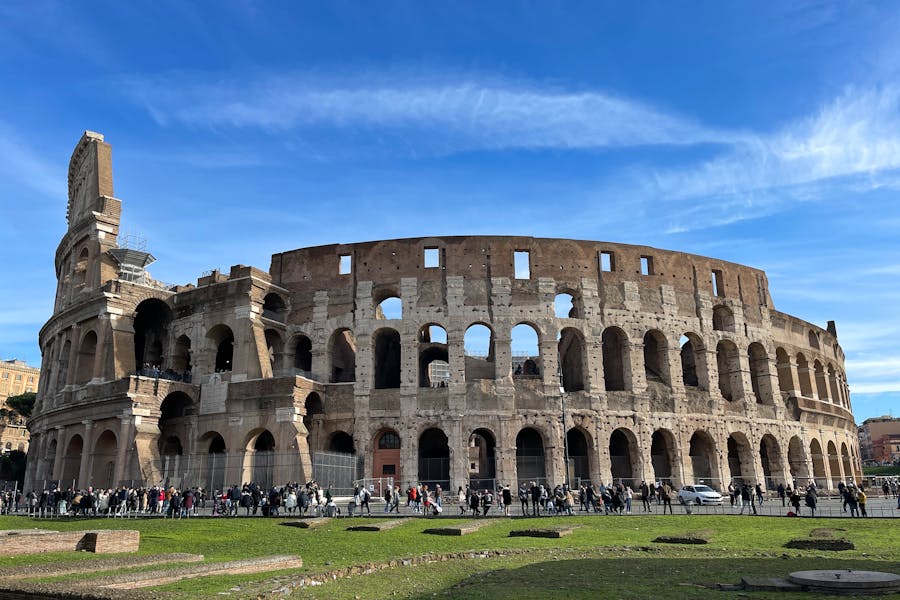
Rome’s ancient ruins are second to none. The Colosseum stands as a testament to the grandeur of the Roman Empire. This massive amphitheater once hosted gladiator battles and other spectacles. It’s a must-see for any visitor to Rome.
The Roman Forum, just a stone’s throw from the Colosseum, was the heart of ancient Roman life. Here, you can walk among the ruins of government buildings, temples, and public spaces. It’s like stepping back in time.
Don’t miss the Pantheon, an architectural marvel with its perfect dome and oculus. This former temple has survived nearly 2,000 years and still inspires awe. The Appian Way, one of the earliest Roman roads, offers a glimpse into the empire’s vast network of highways.
Prague’s Architectural Heritage
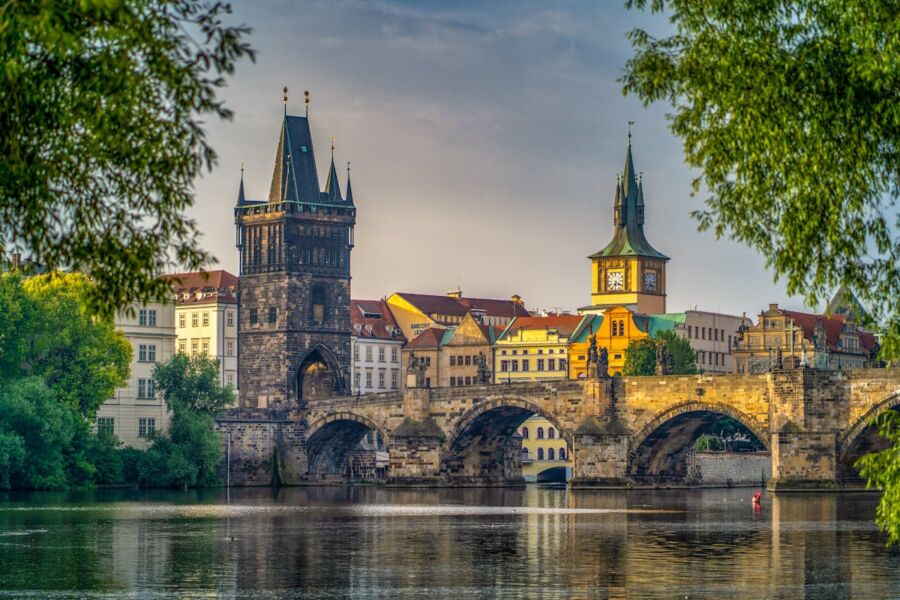
Prague’s Old Town is a medieval wonderland. The Old Town Square is home to the famous Astronomical Clock, a 600-year-old timepiece that still draws crowds for its hourly show. It’s a quirky bit of engineering that’s become a symbol of the city.
The Charles Bridge is Prague’s most iconic landmark. This stone bridge, lined with statues, has connected the Old Town to the Lesser Town for centuries. It’s especially magical at sunrise or sunset.
Prague’s Jewish Quarter tells the story of the city’s Jewish community through its synagogues and the haunting Old Jewish Cemetery. The quarter’s buildings survived World War II and now serve as powerful reminders of the past.
The Vatican and Prague Castle
The Vatican City, nestled within Rome, is the heart of the Catholic Church. St. Peter’s Basilica, with its massive dome designed by Michelangelo, is an architectural and spiritual wonder. The Vatican Museums house some of the world’s greatest art treasures.
Prague Castle, perched on a hill overlooking the city, is the largest ancient castle complex in the world. It’s been the seat of Czech rulers for over a thousand years. The castle grounds include the stunning St. Vitus Cathedral, palaces, and gardens.
Both these complexes offer visitors a chance to explore centuries of history, art, and power. They’re more than just tourist spots – they’re living museums that continue to shape their cities today.
Culinary Delights and Dining Experiences
Prague and Rome are both food lovers’ paradises. Each city offers unique flavors, traditional dishes, and unforgettable dining experiences that reflect their rich culinary heritage.
Traditional Cuisine
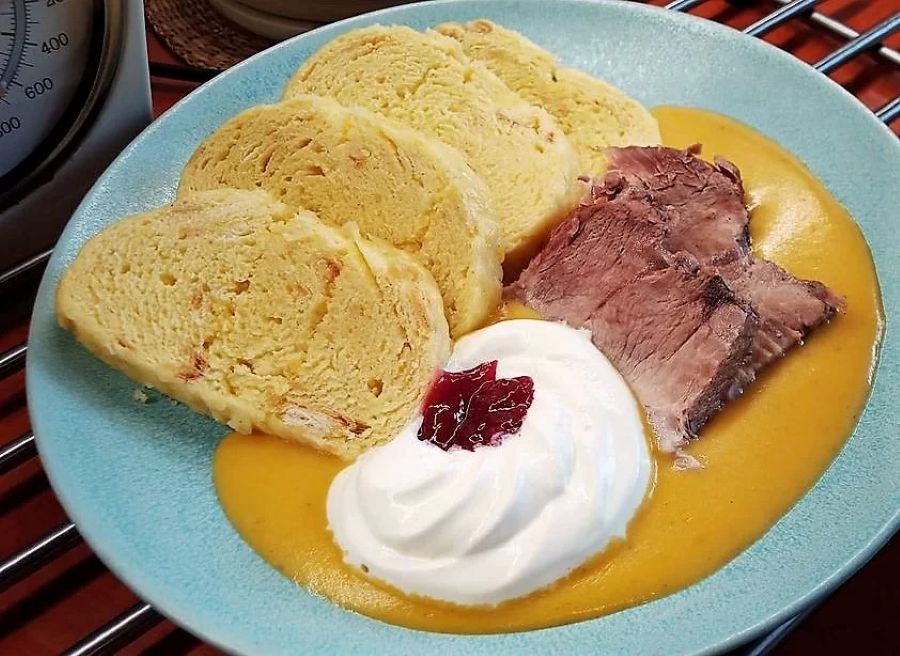
Czech food is hearty and filling. Think dumplings, roasted meats, and rich sauces. Goulash is a must-try – a beef stew with a thick gravy that warms you up on chilly days. Don’t miss svíčková, tender beef in a creamy sauce served with bread dumplings. It’s comfort food at its finest!
Italian cuisine needs no introduction. Pasta, pizza, and gelato are just the start. Each region has its own specialties. In Rome, try cacio e pepe – a simple yet delicious pasta dish with cheese and black pepper. Carbonara is another Roman classic that’ll make your taste buds dance.
Both cities have their own unique beer cultures too. Czech pilsners are world-famous, while Italy’s craft beer scene is growing fast.
Dining in Prague

Prague’s dining scene is a mix of old and new. Traditional Czech pubs serve up hefty portions of local fare alongside foamy mugs of beer. These spots are great for trying classic dishes without breaking the bank.
For a special night out, Prague has some truly impressive restaurants. Some even offer stunning views of the city’s fairytale skyline. The Pub Praha 1 is a fun spot where you can pour your own beer right at your table!
Food tours are a great way to explore Prague’s culinary landscape. They’ll take you to hidden gems and let you taste a bit of everything. Don’t forget to try some street food too – trdelník (a sweet pastry) is a popular treat.
Italian Gastronomy

Rome is a food lover’s dream. From tiny family-run trattorias to high-end restaurants, there’s something for every taste and budget. The city is famous for its pasta dishes, but there’s so much more to try.
Start your day with a perfect espresso and cornetto (Italian croissant) at a local bar. For lunch, grab a slice of pizza al taglio – Roman-style pizza sold by weight. In the evening, join the locals for aperitivo, Italy’s answer to happy hour.
Don’t forget to visit Rome’s food markets. Campo de’ Fiori is a bustling square where you can buy fresh produce, cheese, and cured meats. It’s a great place to pick up picnic supplies or edible souvenirs.
Comparing the Climate and Best Times to Visit
Prague and Rome have distinct weather patterns that shape the best times to visit each city. The seasons bring unique charms and challenges for travelers to consider when planning their trips.
Weather Patterns in Prague and Rome
Prague gets cold winters and mild summers. Temps drop below freezing in winter with some snow. Spring and fall are crisp but pleasant. Summers warm up to the 70s°F. Rome stays milder year-round. Winters rarely dip below 40°F. Summers get hot and humid, often in the 80s or 90s°F. Spring and fall in Rome are lovely, with temps in the 60s and 70s°F.
Prague sees more rain spread through the year. Rome gets less rain overall, but fall can be wet. Both cities can have sudden showers, so pack a raincoat just in case!
Ideal Travel Seasons
For Prague, late spring (May) and early fall (September) are perfect. The weather’s mild and crowds are smaller than summer. Plus, there are fun festivals and events. Summer’s nice too, but watch out for tourist crowds.
Rome shines in spring and fall as well. April, May, September, and October offer comfy temps for sightseeing. Summer gets steamy, and August empties out as locals flee the heat. Winter in Rome can be a hidden gem – fewer tourists and mild weather for exploring.
Both cities sparkle during Christmas markets in December. Just bundle up in Prague!
Accommodation and Staying Options
Prague and Rome offer diverse lodging choices to suit different tastes and budgets. From cozy hostels to luxurious hotels, both cities have something for every traveler.
Hotels and Hostels
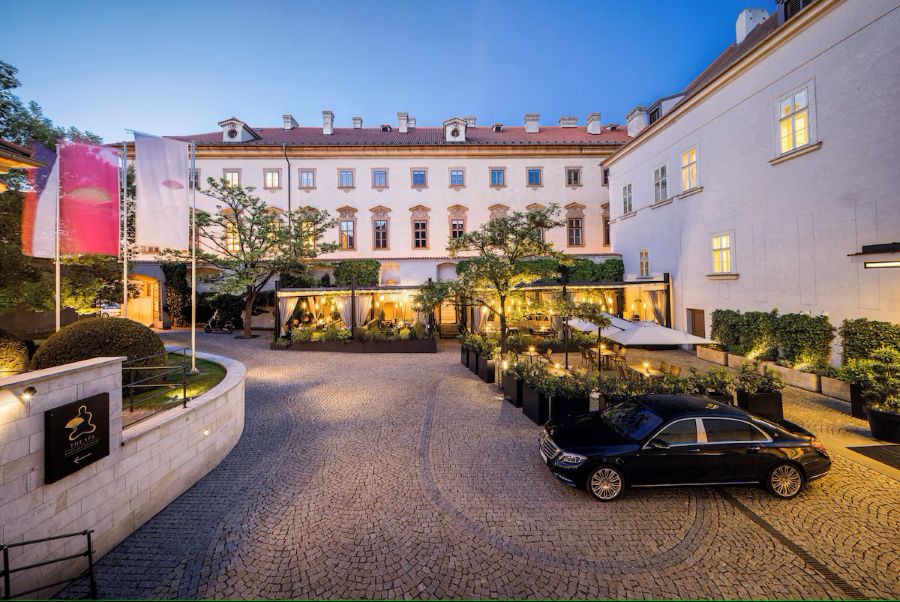
Booking a place to stay in Prague or Rome is easy with many options available. Prague’s Old Town brims with charming boutique hotels in restored historic buildings. The city also has plenty of budget-friendly hostels popular with backpackers.
Rome boasts grand hotels near famous sights like the Spanish Steps and Trevi Fountain. But watch out – rooms can be pricey during peak season. Hostels in Rome tend to be a bit more expensive than Prague, but still offer good value.
Both cities have international hotel chains if you prefer familiar brands. Just be sure to book early, especially in summer when rooms fill up fast!
Unique Stays in Prague
Prague shines when it comes to quirky accommodations. How about sleeping in a converted windmill or a medieval tower? These one-of-a-kind stays let you really soak up the city’s fairy-tale atmosphere.
For a romantic getaway, try one of Prague’s cozy pensions. These family-run guesthouses offer a homey vibe and often include breakfast. Some even have views of Prague Castle!
Airbnb is big in Prague too. You can rent entire apartments in hip neighborhoods like Vinohrady or Žižkov. It’s a great way to live like a local during your visit.
Luxury and Budget Options in Rome
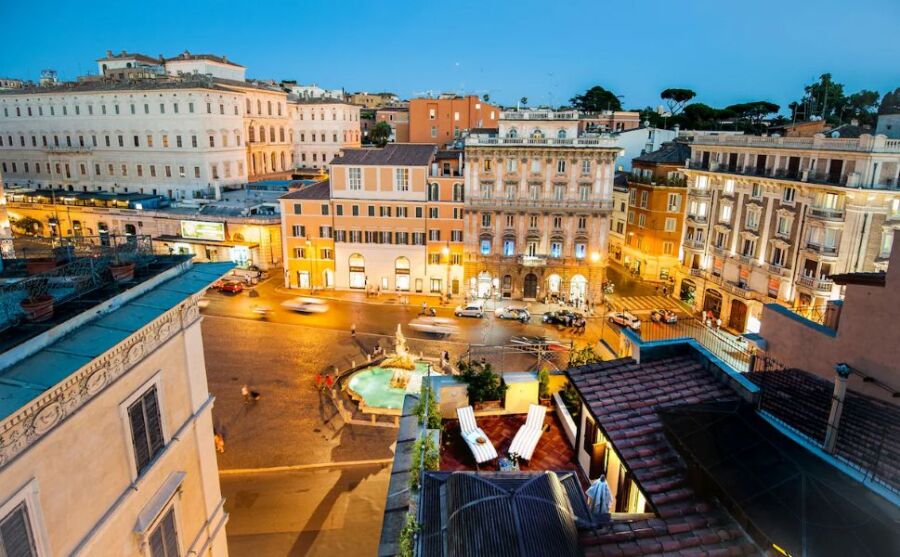
Rome caters to luxury travelers with 5-star hotels fit for royalty. Picture yourself sipping cocktails on a rooftop terrace overlooking the Colosseum. Many top hotels occupy beautiful palazzos with centuries of history.
But Rome isn’t just for big spenders. The city has loads of comfy mid-range hotels and B&Bs. Areas like Monti and Trastevere offer charming, affordable places to rest your head after a day of sightseeing.
Camping is an option too! There are several campsites on Rome’s outskirts with good bus links to the center. It’s a fun, budget-friendly choice for outdoorsy types.
Exploring Arts and Museums
Prague and Rome both offer incredible cultural experiences for art lovers. These cities boast world-class museums and galleries showcasing everything from ancient artifacts to contemporary masterpieces.
Museum Culture in Prague
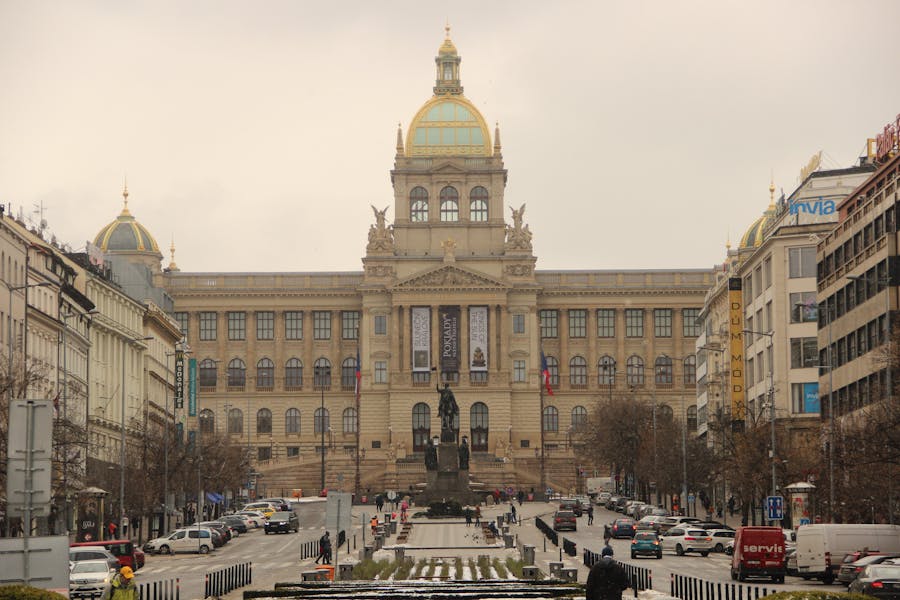
Prague’s museums are a treat for history buffs and art fans alike. The National Museum is a must-see, with exhibits on natural history, archaeology, and Czech culture. It’s housed in a stunning Neo-Renaissance building that’s worth a visit just to admire the architecture.
For modern art enthusiasts, the DOX Centre for Contemporary Art is the place to be. This former factory now hosts cutting-edge exhibits and installations. Don’t miss the giant airship sculpture on the roof!
Prague also has some quirky museums that are fun to explore. The Franz Kafka Museum offers a surreal look into the famous author’s life and works. And the Museum of Communism gives visitors a glimpse into life behind the Iron Curtain.
Famous Galleries of Rome
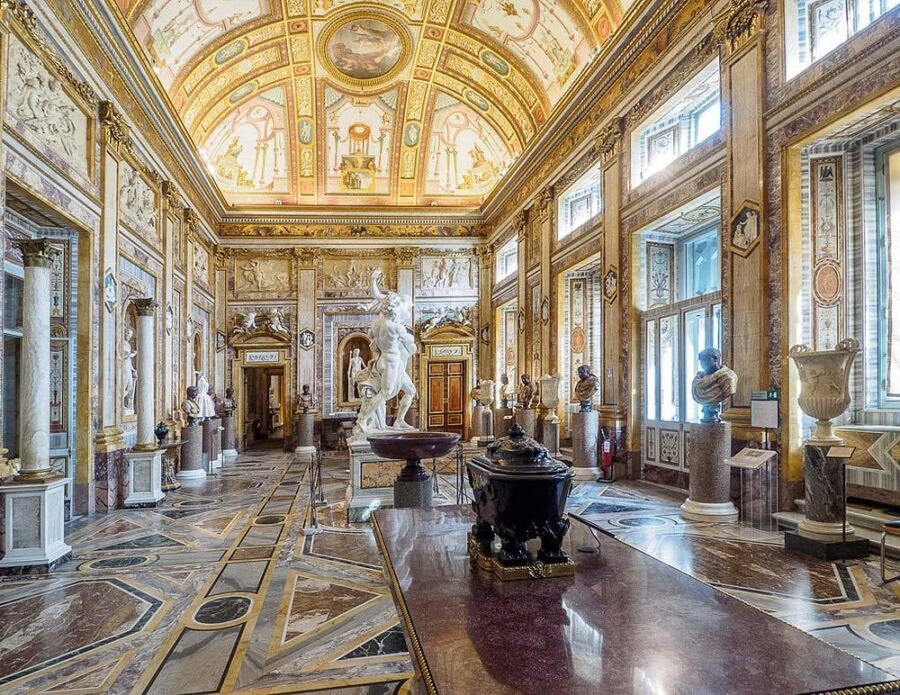
Rome’s art scene is truly legendary. The Vatican Museums are home to some of the world’s most famous works, including the Sistine Chapel. Pro tip: book tickets online in advance to skip the long lines!
The Galleria Borghese is another gem, showcasing Renaissance and Baroque masterpieces in a beautiful villa setting. It’s smaller and less crowded than some other museums, making for a more relaxed viewing experience.
For a taste of modern and contemporary art, head to the MAXXI museum. Its striking architecture is a work of art itself. Inside, you’ll find innovative exhibits by Italian and international artists.
Rome’s art isn’t just confined to museums. The city itself is like an open-air gallery, with stunning sculptures and fountains around every corner. Take a stroll through the historic center to soak it all in.
Public Transportation and Getting Around
Prague and Rome both offer excellent public transit systems for visitors to navigate these historic cities. Each has unique options that make exploring a breeze.

Prague’s public transport is a dream for tourists. The metro, trams, and buses form a network that reaches every corner of the city. Visitors can zip between Old Town and New Town on the metro in minutes. Trams are great for sightseeing – hop on and enjoy views of stunning architecture as you travel.
Buying tickets is easy. Grab a 24-hour or 72-hour pass to use all transport types. Remember to validate your ticket before boarding. KAYAK’s travel search can help find deals on Prague trips.
Prague’s compact center means walking is often the best choice. Stroll across the Charles Bridge or wander through winding cobblestone streets. Just watch out for speedy trams!
Rome’s Transit Options

Rome’s public transport isn’t quite as smooth as Prague’s, but it still gets the job done. The metro is fast and connects major sights. It’s perfect for zipping from the Colosseum to the Vatican.
Buses cover areas the metro doesn’t reach. They can be crowded, so hold on tight! Trams are less common but offer a scenic ride through some neighborhoods.
Buy tickets at metro stations or tobacco shops. Make sure to validate them on board. Rome’s historic center is walkable, letting you soak in the atmosphere between major sites. Comfy shoes are a must on those old cobblestones!
Taxis are pricier but handy for late nights or tired feet. Always use official white cabs and insist on the meter.
Shopping and Leisure Activities
Prague and Rome offer unique shopping experiences and fun leisure activities. Each city has its own special charm when it comes to retail therapy and ways to unwind.
Local Markets and Boutiques
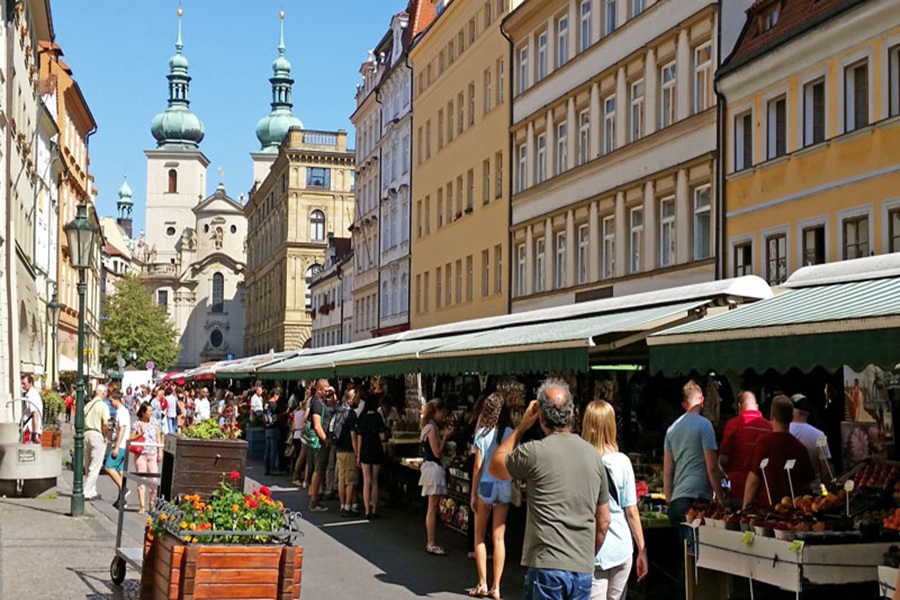
Prague’s markets are a treasure trove of local goods. The Havelska Market, open daily, sells fresh produce and handmade crafts. It’s a great spot to pick up some Czech treats or souvenirs. For fashion lovers, Parizska Street is the place to be. This ritzy avenue is lined with high-end boutiques and designer stores.
Rome’s markets are just as exciting. Campo de’ Fiori is a lively outdoor market where you can buy fresh flowers, fruits, and veggies. The Porta Portese flea market is perfect for bargain hunters. It’s open on Sundays and sells everything from antiques to clothes.
Both cities have charming neighborhoods for window shopping. In Prague, check out the Vinohrady area. In Rome, stroll through the trendy Monti district.
Unique Finds in Prague
Prague is famous for its Bohemian crystal and glassware. You can find beautiful pieces in shops all over the city. The Moser Glass shop in Old Town is a good place to start.
Czech garnets are another popular buy. These deep red gems make lovely jewelry. The Lapidary shop near the Charles Bridge sells authentic pieces.
For book lovers, Prague’s antique bookshops are a must-visit. The Globe Bookstore and Cafe is an English-language gem. It’s a great spot to grab a coffee and browse for books.
Beer fans shouldn’t miss the chance to buy some local brews. Many shops sell bottled craft beers from small Czech breweries. It’s a tasty souvenir to take home!
Retail Therapy in Rome
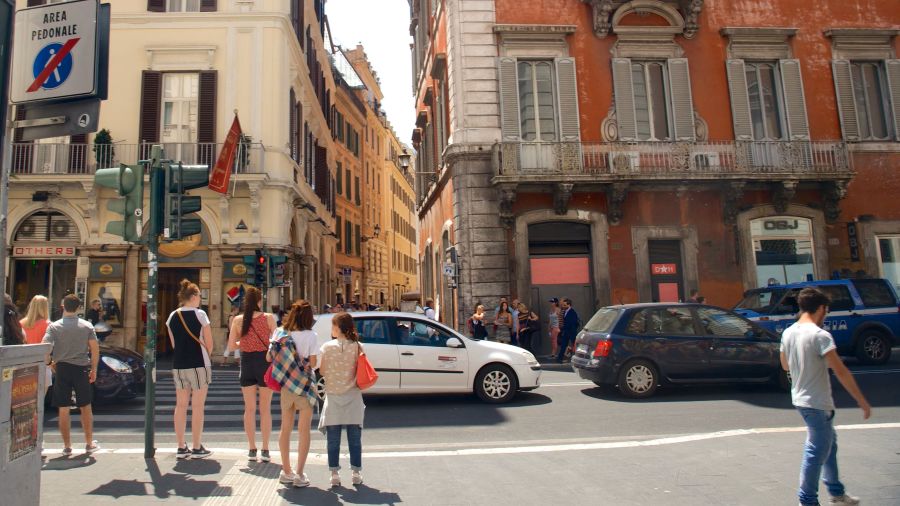
Rome is a fashion lover’s dream. The Spanish Steps area is packed with designer stores. Via del Corso is great for more affordable shopping. It has a mix of international brands and Italian shops.
For leather goods, head to the Campo Marzio neighborhood. You’ll find lots of shops selling handmade bags, shoes, and belts. The quality is top-notch and prices are often better than big brands.
Food shopping in Rome is a treat. The Testaccio Market is a foodie paradise. You can buy fresh pasta, cheeses, and cured meats. It’s perfect for putting together a Roman picnic.
Don’t forget about Italian wines! Enotecas (wine shops) are everywhere in Rome. They offer tastings and expert advice on choosing the perfect bottle to take home.
Nightlife and Entertainment Scene
Both Prague and Rome offer exciting after-dark experiences. From lively bars to trendy clubs, these cities come alive when the sun goes down.
Prague’s Vibrant Nightlife

Prague’s nightlife is legendary. The city boasts countless pubs serving world-famous Czech beer at wallet-friendly prices. Beer gardens are popular hangouts in warmer months, perfect for sipping a cold one under the stars.
For dance enthusiasts, Prague’s club scene is thriving. Clubs like Roxy and Karlovy Lázně pump out tunes till dawn. The five-story Karlovy Lázně claims to be Europe’s largest nightclub.
Don’t miss the chance to catch a show at Prague’s famous Black Light Theatre. These unique performances use UV light and fluorescent costumes to create mesmerizing visual effects.
Rome after Dark

Rome’s nightlife has a more laid-back vibe. The eternal city is known for its evening walking tours that showcase illuminated monuments and piazzas.
Aperitivo is a must-try Roman tradition. Many bars offer buffet-style snacks with your evening drinks. The trendy Trastevere neighborhood is a hotspot for aperitivo and bar-hopping.
For a taste of high-end nightlife, check out the clubs along the Tiber River. These venues often feature international DJs and attract a stylish crowd.
Live music lovers will find plenty of options in Rome. From jazz clubs to rock venues, there’s something for every taste.
Travel Advice and Practical Tips
Planning a trip to Prague or Rome? Here are some handy tips to make your visit smoother and more enjoyable. We’ll cover cultural norms and safety info to help you navigate these amazing cities like a pro.
Cultural Etiquette and Customs
When in Rome, do as the Romans do! Italians love their coffee, but don’t order a cappuccino after 11 am – it’s a breakfast drink. Dress modestly when visiting churches. Cover your shoulders and knees.
In Prague, it’s polite to greet shopkeepers when you enter and leave. A simple “Dobrý den” (good day) goes a long way. Tipping isn’t expected, but rounding up the bill is appreciated.
Public displays of affection are fine in both cities. But keep it PG! Locals might give you funny looks if you’re too handsy.
Remember, patience is key. Service can be slower than you’re used to. Relax and enjoy the laid-back vibe.
Safety and Emergency Information
Both Prague and Rome are generally safe cities, but pickpockets love tourists. Keep your valuables close, especially on crowded public transport.
In Rome, watch out for scams near major attractions. Don’t accept “free” gifts – they’ll demand payment. Stick to official taxis or ride-sharing apps.
Prague’s nightlife is legendary, but pace yourself! The beer is strong and cheap. Don’t wander alone late at night, especially if you’ve had a few.
Emergency number in both cities: 112. It works even without phone signal. Jot down your embassy’s contact info too, just in case.
Stay alert, trust your gut, and you’ll have a blast in these incredible cities!
Frequently Asked Questions
Prague and Rome are two iconic European cities with lots to offer visitors. Each has its own unique charms, sights, and experiences that set it apart. Let’s dive into some common questions travelers have when deciding between these two amazing destinations.
Which city offers a richer historical experience, Prague or Rome?
Rome wins this one hands down. The Eternal City’s history spans over 2,500 years, with ancient ruins like the Colosseum and Roman Forum right in the city center. Prague’s history is impressive too, but it can’t quite match Rome’s ancient past.
That said, Prague’s Old Town Square and Charles Bridge offer a medieval charm that’s hard to beat. The city’s well-preserved Gothic and Baroque architecture gives visitors a real sense of stepping back in time.
What unique attractions can travelers expect when visiting Prague in comparison to Rome?
Prague’s castle complex is the largest in the world. It’s a must-see with stunning views over the city. The city’s famous Astronomical Clock is another one-of-a-kind sight.
Prague also has some quirky modern art, like the giant baby statues crawling up the Žižkov TV Tower. These odd touches give Prague a fun, offbeat vibe you won’t find in Rome.
How do the costs of dining and accommodation compare between Prague and Rome?
Prague is generally cheaper than Rome. Travelers can find good deals on hotels and Airbnbs in Prague, especially outside the main tourist areas. Food and drinks are also more budget-friendly in Prague.
Rome tends to be pricier, especially in popular areas near major attractions. But bargains can still be found if you’re willing to explore less touristy neighborhoods.
Can you suggest lesser-known cultural experiences in Prague that are distinct from those in Rome?
Prague’s puppet theaters are a unique local tradition. Catching a show is a fun way to experience Czech culture. The city also has some great beer gardens where you can sample local brews and chat with locals.
For something really different, check out Prague’s nuclear bunker museum. It’s a fascinating look at Cold War history that you won’t find in Rome.
What are the differences in the local ambiance and nightlife between Prague and Rome?
Prague has a cozy, fairytale feel, especially in winter when snow dusts the cobblestone streets. Its nightlife centers around pubs and beer halls with a laid-back vibe.
Rome has a more vibrant, chaotic energy. Its nightlife is more diverse, from chic wine bars to bustling piazzas where locals and tourists mingle late into the night.
Are there any significant contrasts in the weather patterns of Rome and Prague that tourists should consider?
Prague gets pretty chilly in winter, with temps often dropping below freezing. Summers are mild and pleasant. Rome has a Mediterranean climate with hot summers and mild winters.
Spring and fall are lovely in both cities. But if you’re looking for warm weather, Rome is your best bet. Prague shines in the cooler months when its cozy pubs and Christmas markets are at their best.

